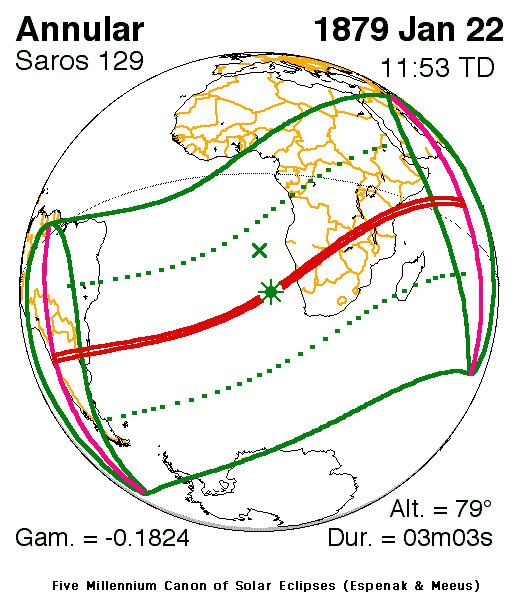Nature Annular Magnitude 0.97 Max. width of band 110 km (68 mi) Start date January 22, 1879 | Gamma -0.1824 Duration 183 sec (3 m 3 s) Greatest eclipse 11:53:08 | |
 | ||
An annular solar eclipse occurred on January 22, 1879. A solar eclipse occurs when the Moon passes between Earth and the Sun, thereby totally or partly obscuring the image of the Sun for a viewer on Earth. An annular solar eclipse occurs when the Moon's apparent diameter is smaller than the Sun's, blocking most of the Sun's light and causing the Sun to look like an annulus (ring). An annular eclipse appears as a partial eclipse over a region of the Earth thousands of kilometers wide. The path of totality crossed southern Africa.
Observations
On 22 January 1879, approximately 1700 British soldiers were annihilated by Zulu warriors during the Zulu War in South Africa. At 2:29 PM there was a solar eclipse, and according to legend, this motivated the Zulus, who claimed that it was a sign that they would prevail. The conflict was named the Battle of Isandlwana, the Zulu name for the battle translates as "the day of the dead moon".
